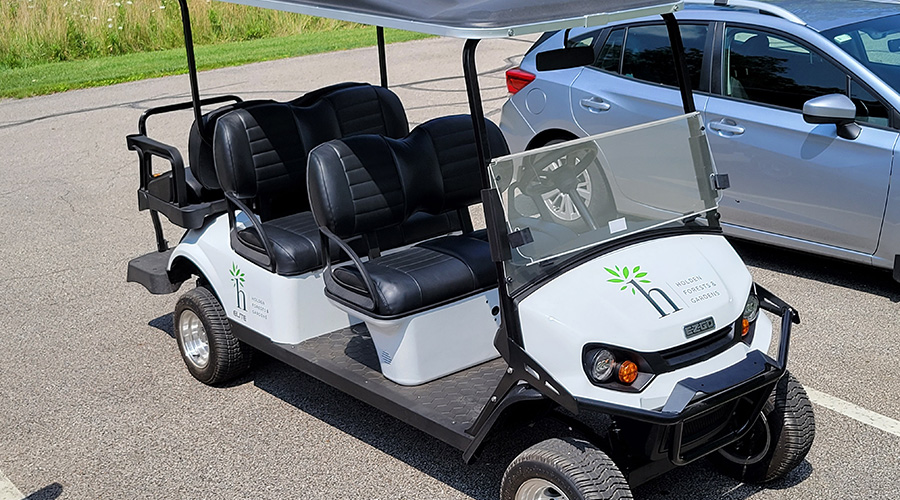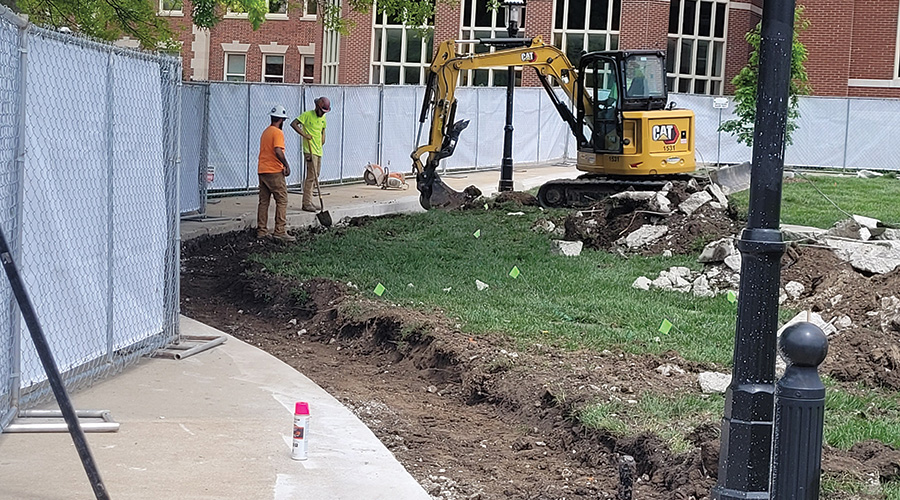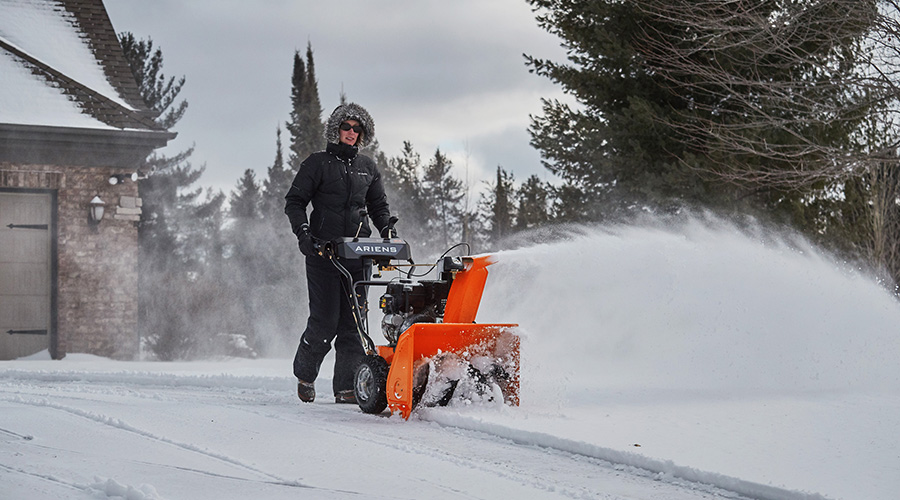Mowers: Choice Cuts
Finding the ‘best’ mower requires careful consideration of a series of key issues
Mowers have evolved tremendously in recent years as manufacturers have tried to design products that meet users ever-changing needs for safety, efficiency and reliability. As a result, grounds care managers have more options than ever when it comes to specifying mowing equipment.
The choices are almost overwhelming. Where does the process begin? To make decisions easier, managers should consider a series of important criteria to help narrow the search and ultimately choose the right mowing equipment.
Dealer Deliberations
Begin the search for new mowing equipment with local dealers. In many ways, choosing the dealer first is as important as choosing the mower itself. A dealer will be a manager’s greatest source of product information and service.
Check out the brands of equipment they carry. If the product line meets facilities and department needs, then continue to pursue a working relationship.
Managers will want to make sure the dealer is the right partner by considering these questions: Is the dealer friendly, attentive, available, reliable, knowledgeable and experienced? How long has it been in business? How long has it carried each brand of equipment?
Consider the dealer’s location, and remember that time is money. If equipment operators or mechanics spend hours traveling to pick up parts or take equipment in for repair, that costs the department money. Another dealer with similar equipment might be much closer. See if the dealer will pick up and deliver equipment that needs repairs.
Don’t forget to check the dealer’s references to find out about service quality and responsiveness. Find out how quickly a broken mower can be fixed in the hectic spring months. Ask if the dealer offers loaner or rental equipment to use while equipment is in the shop — another way your dealer can help you and your staff remain productive.
Productivity and Safety
Before getting down to mower details, managers might want to compare various brands for quality and features. Mower manufacturers have become increasingly competitive over technology and special features. Managers should check several companies out before deciding which features are most important.
In some cases, it can be more efficient to have all the same brand equipment, but if there is a particular brand or model with an important feature, it might worth the time and effort to switch brands. Among the key considerations for mower features and functions are these:
Blades. Mulching blades cut the grass blades into small pieces that remain on the grass and decompose. This process eliminates the need for bagging and hauling away grass clippings. Also, the smaller clippings are less likely to create unsightly windrows that must be raked or blown off the turf. Many mowers now feature double blades, which can produce a more even cut and eliminate the need to cut an area twice to get the appearance desired.
Ergonomics. Ergonomic design and ease of operation might be a priority for equipment operators. Managers should compare ride-on equipment to feel the comfort of the seating and back support. Some machines are equipped with shock absorption through independent suspension and vibration control that makes operating the equipment less fatiguing.
Consider the position of handles and controls on walk-behinds and ride-on machines. Shape and placement of steering controls, button controls and handle grips have an impact on ease of operation and can provide more comfort over long hours of use.
Engine type. Mowers are available with up to 65 horsepower (hp), with many models in the 25-30 hp range. More power enables the mower to deliver better quality at faster speeds. A faster blade tip speed produces a better quality cut at higher ground speeds. Increased horsepower also is an important consideration when attachments such as vacuums, blowers, aerators and plow blades with mowing machines.
Consider engines that produce fewer emissions and less noise. Federal, state and local regulations have driven manufacturers to produce mowers that are less polluting and are more environmentally friendly. Some communities already have ordinances against operating machinery during certain hours of the day.
Fuel efficiency also might be an important criterion. Not only does reducing fuel consumption save money on the cost of fuel directly, but it is also saves money by not having to refuel as often.
The type of fuel required also might be a consideration. Gasoline and diesel engines are commonly available on riding mowers. Liquid-cooled, diesel engines tend to last longer and require less maintenance than standard air-cooled gasoline engines, and diesel engines are also more fuel-efficient.
Consider a pressurized engine for sites with rough terrain or steep slopes. Without a pressurized engine, lubrication is inconsistent when going up and down hills, resulting in more wear and reduced engine life.
Tires. Managers should consider wheel placement, tire design and weight dispersal carefully during specification. Improved wheel placement, floatation tires and lower center of gravity allow workers to operate mowers on steeper slopes, decreases compaction during regular mowing operations and allows for safer mowing in wet conditions. Turf damage is common when making tight turns around landscape elements, and improved tire design and wheel placement can eliminate much of this damage.
Mower deck. Mower decks are designed to produce quality cutting, even on slopes and uneven terrain. Full-floating decks and anti-scalping rollers now come as standard features on many newer mower models. Less turf damage due to mowing operations — from tire compaction or blade scalping-- means less repair work, fewer weeds and a better-looking lawn.
Size and Type
Managers should choose a complement of mower sizes that will most efficiently get the job done. On average, mowers come with decks in widths of 21-72 inches, and wider decks are available.
To determine the appropriate size of mowing deck, first find out the average size and terrain of areas to be mowed. Not every site can accommodate an 18-foot winged mower or even a 72-inch walk-behind. Take into account landscaping, tree spacing, building location, berms and other site features that will affect mower size.
A larger deck does not always mean that jobs get done faster. Newer, smaller mowers actually might produce a better-quality cut more quickly, making the entire job less time consuming. Smaller mowers also might be more versatile, so crews can use them around landscaping and trees and transport them more easily from site to site. Using a smaller but faster mower might eliminate the need to have several pieces of equipment on site.
Compare ride-on versus walk-behind mowers, each of which has its advantages. Price can be a substantial difference, but if all other factors were equal, most equipment operators who mow every day would prefer to ride. When comparing costs, don’t forget to figure in employee-related cost. If they are required to walk behind a mower every day, it might be tough to keep that employee happy and effective. What is that worth?
Also think about transporting the mower when choosing equipment size and type. Will it fit on a trailer with other equipment? Will the department need a new trailer or a new truck to pull the trailer and the mower?
Maintenance
Ease of service is a central consideration, so managers should have a mechanic inspect any mower before purchase. If a mower is easy to maintain, it is more likely to receive the care necessary to keep it in good working condition.
Manufacturers have greatly enhanced mower serviceability and durability of mowers. Among the new features are improved air filters, built-in jacks for raising mower decks to change blades, easier-to-read temperature gauges, and cutting decks that use blade spindles without grease fittings on the bearings. Also, some mowers now require fewer tools to service, and in some cases, one tool does it all.
Versatility
A multitude of attachments are available for riding mowers. On many machines, decks can be removed and replaced with aerators, rakes, snow blowers, leaf vacuums and chemical sprayers. Some accessories can be used in conjunction with the mowing deck. Managers should consider the ways in which a mower might be used in the off-season and whether these attachments could make the machine more useful — and easier to cost-justify — in all seasons.
Finally, before specifying or purchasing any equipment, managers should involve staff in on the process by seeking their opinions and asking about their needs and expectations regarding mowing equipment. Also, make sure the operator tests the machine in the field.
Even with the multitude of choices available, managers who carefully consider these five criteria should be able to efficiently sort through possibilities and purchase mowing equipment that meets department and organization expectations.
Related Topics:











